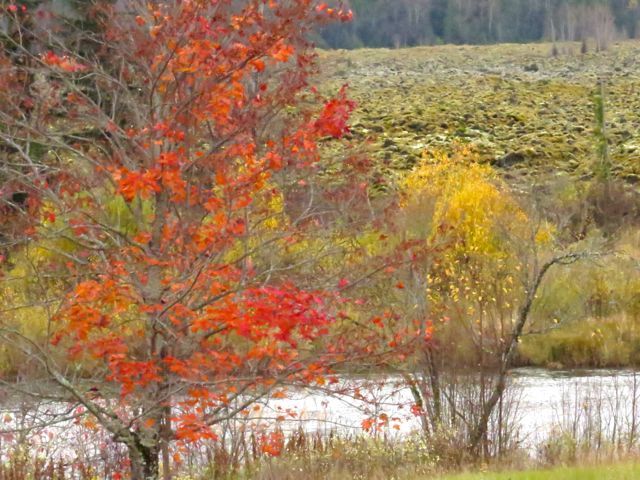 The Nisga’a Lava Beds are the apparently “barren” area across the river in this shot. They stretch for miles. This site describes the volcano that caused them. Here is the story from the Nisga’a nation.
The Nisga’a Lava Beds are the apparently “barren” area across the river in this shot. They stretch for miles. This site describes the volcano that caused them. Here is the story from the Nisga’a nation.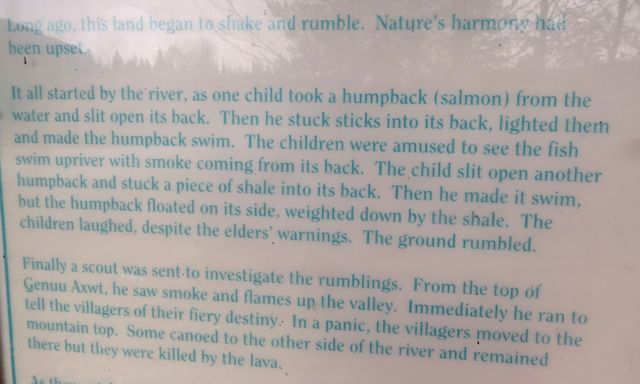
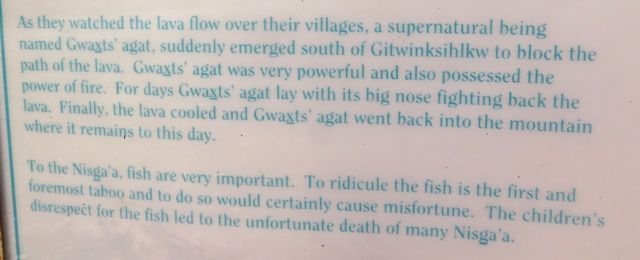 I stayed three nights at Terrace, thanks to wonderful hosts, and one of those days was partially sunny. But everything was dripping wet.
I stayed three nights at Terrace, thanks to wonderful hosts, and one of those days was partially sunny. But everything was dripping wet.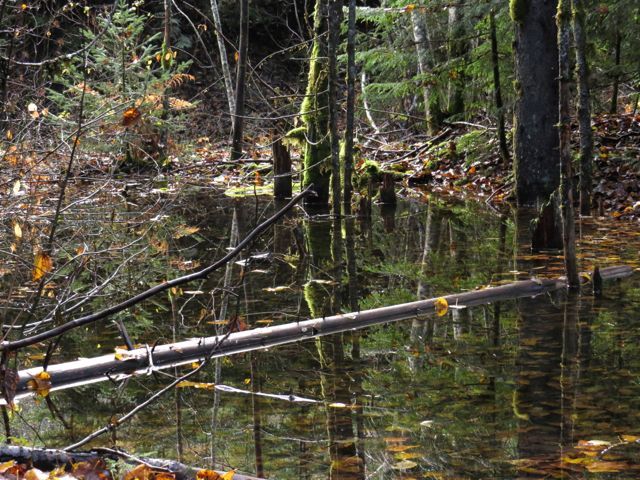
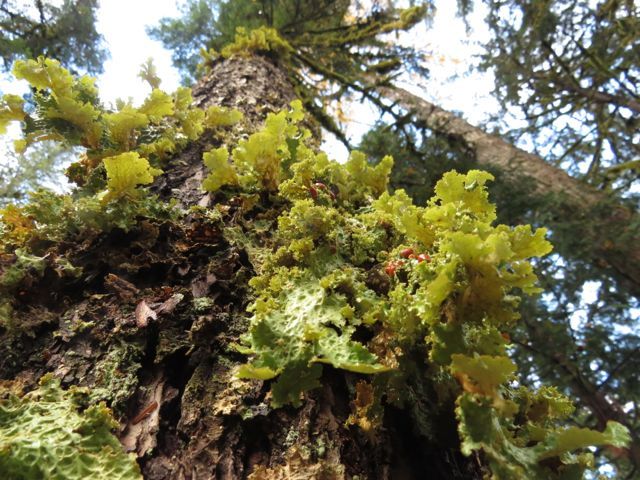 The day we went north to the lava beds – a 100-km drive – it rained.
The day we went north to the lava beds – a 100-km drive – it rained.
Until recently, the rocks had been naked, but now they are covered in lichen on the exposed sides,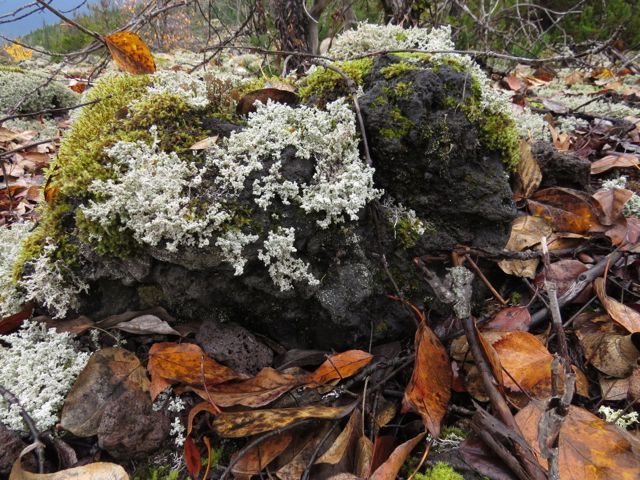
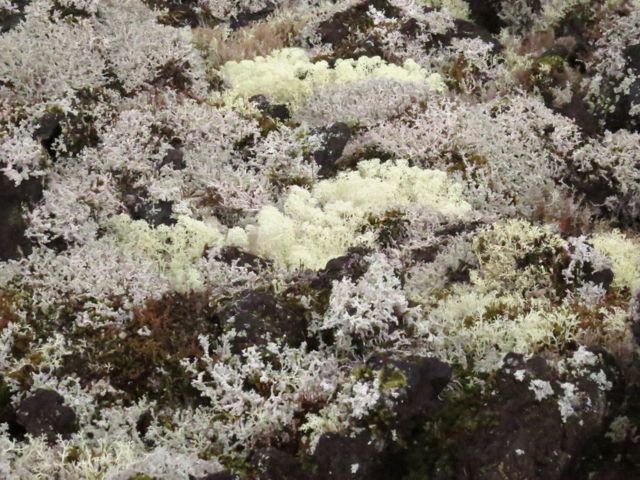 And moss on the shady, north sides.
And moss on the shady, north sides.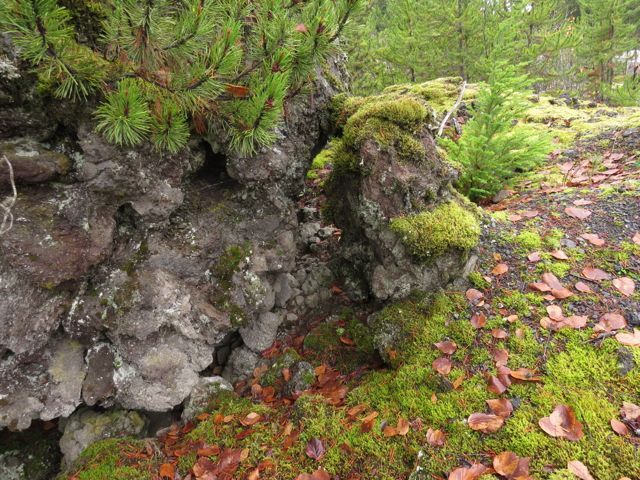 One of the first stops is the Vetter Falls.
One of the first stops is the Vetter Falls.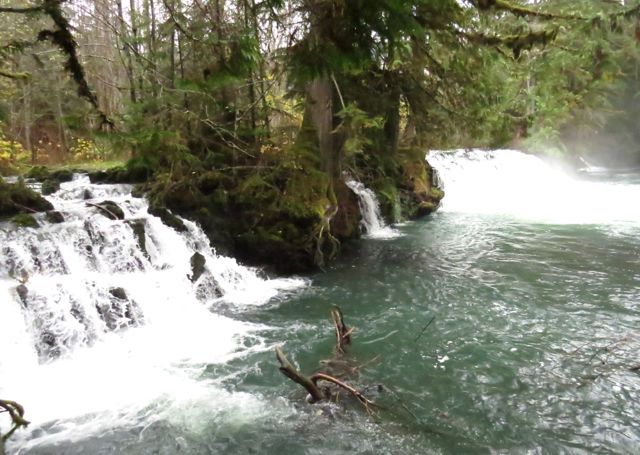 “Phantom” fish are supposed to lie in the pool below them.
“Phantom” fish are supposed to lie in the pool below them. Next to the river, the vegetation can find enough moisture to thrive.
Next to the river, the vegetation can find enough moisture to thrive.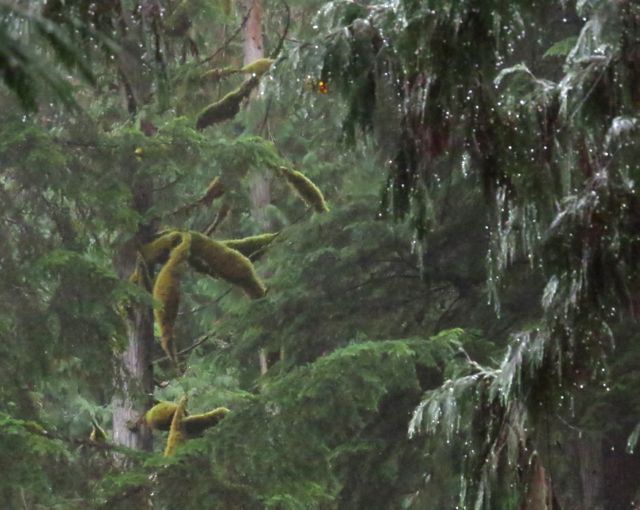
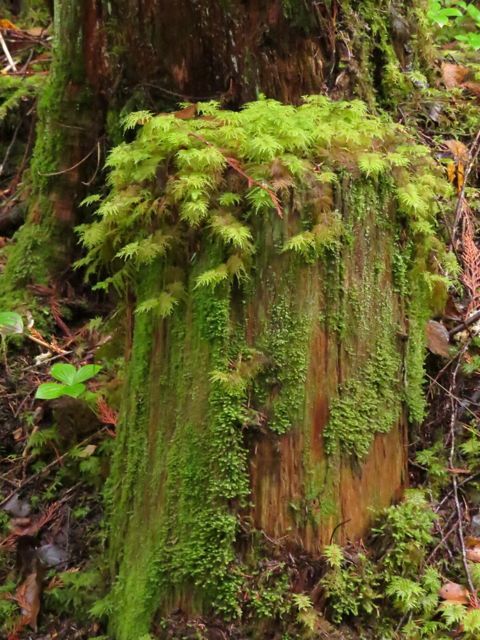 The Nisga’a Nation provide guides, but my host had a friend who was also a certified guide (and oddly enough, he and his wife had been to a slide show of mine, so we almost knew each other) and he showed us many interesting places.
The Nisga’a Nation provide guides, but my host had a friend who was also a certified guide (and oddly enough, he and his wife had been to a slide show of mine, so we almost knew each other) and he showed us many interesting places.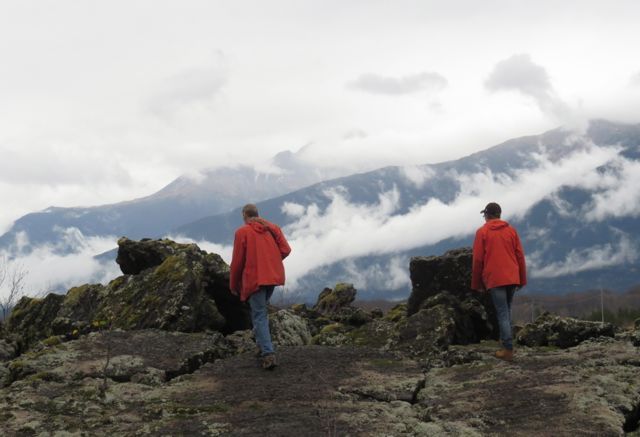 A lot of it was sheet lava that had collapsed and cracked.
A lot of it was sheet lava that had collapsed and cracked.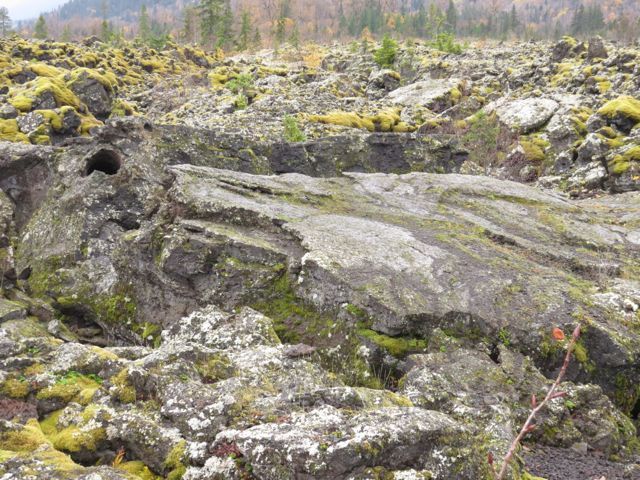 Where the hot magma reached the river, rope lava was formed. (This is not a tree root but a piece of free-standing lava.)
Where the hot magma reached the river, rope lava was formed. (This is not a tree root but a piece of free-standing lava.)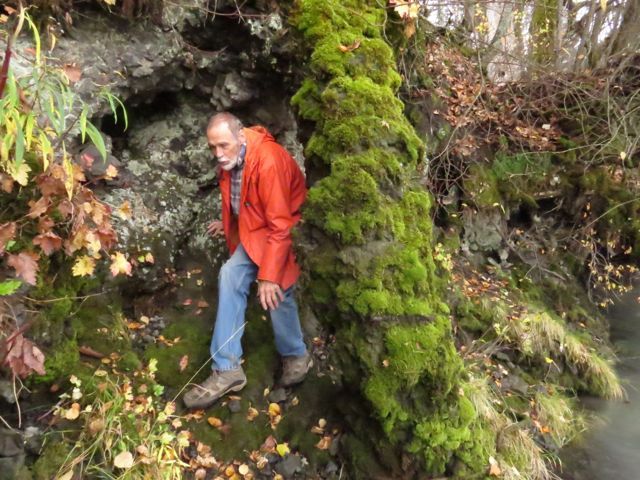 In another place, basalt columns had formed in a rose formation.
In another place, basalt columns had formed in a rose formation.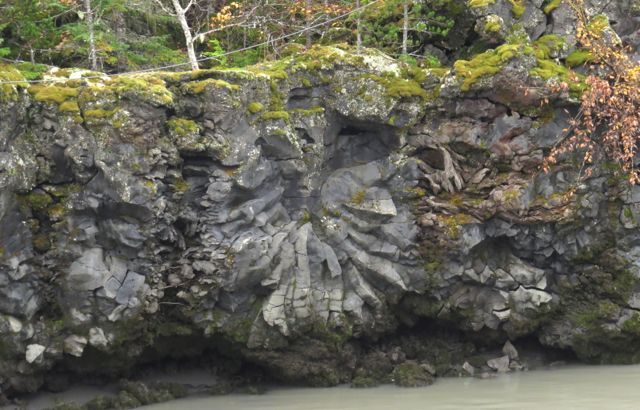 I of course was fascinated by the plants that managed to survive on the most exposed beds. A bonsai hemlock.
I of course was fascinated by the plants that managed to survive on the most exposed beds. A bonsai hemlock.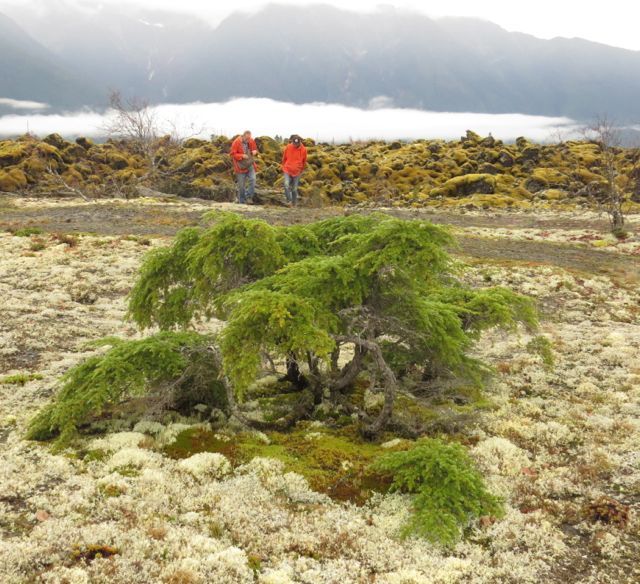 There are several places where BC Parks and the Nisga’a Nation have made trails to view certain aspects of the lava beds. But there is one precious site that is sacred to the Nation, and only selected people are allowed to see it. Legend has it that several virgins were trapped by the lava – inside the hole that formed, one can feel the places where their fingers were inserted. However, a more prosaic explanation involves tree molds.
There are several places where BC Parks and the Nisga’a Nation have made trails to view certain aspects of the lava beds. But there is one precious site that is sacred to the Nation, and only selected people are allowed to see it. Legend has it that several virgins were trapped by the lava – inside the hole that formed, one can feel the places where their fingers were inserted. However, a more prosaic explanation involves tree molds. Smaller ones were scattered about the lava beds – some had trails to them. This one had no trail: walking across the lava was very difficult for an old lady with two poles and bummed knees! You can just make it out to the immediate left of the front person.
Smaller ones were scattered about the lava beds – some had trails to them. This one had no trail: walking across the lava was very difficult for an old lady with two poles and bummed knees! You can just make it out to the immediate left of the front person.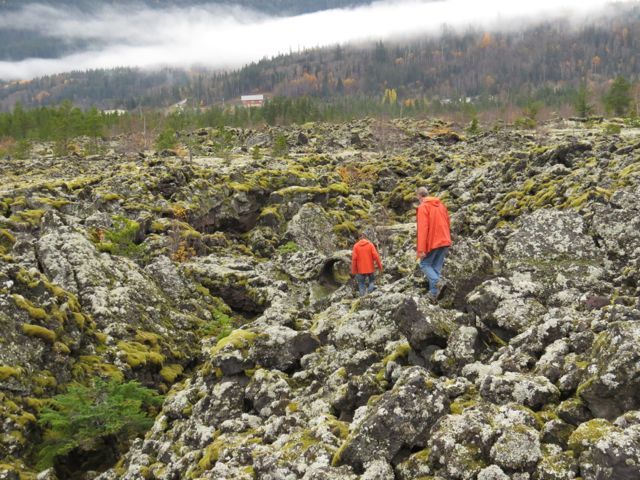 It was extraordinary. I had no idea that such things could happen. The inside is probably a metre across.
It was extraordinary. I had no idea that such things could happen. The inside is probably a metre across.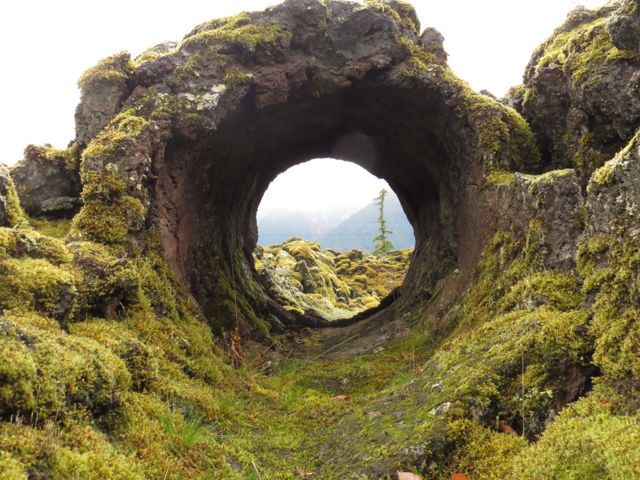
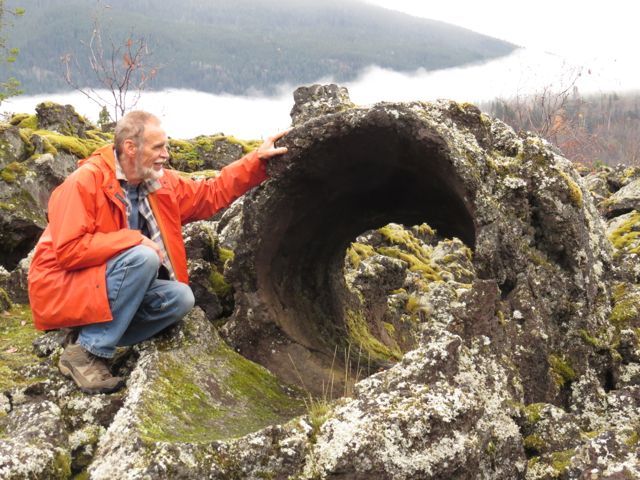
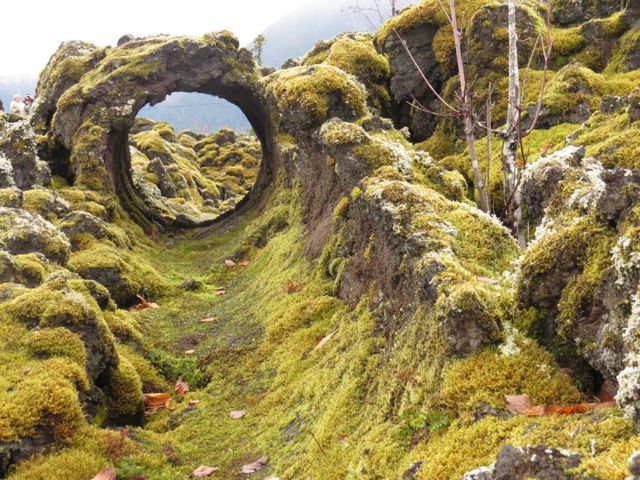 Thank you so much Lavina and David for taking me to this fascinating place. It was the most interesting day of my whole trip.
Thank you so much Lavina and David for taking me to this fascinating place. It was the most interesting day of my whole trip.
(Lavina was also responsible for by far the best-attended slide show of the tour at the Terrace library! I wish there had been more Lavina’s along the route.)

Oh, I am so glad you took some pictures of the lichen on those rocks! I was there in the summer when the temperature was 38c and heat waves were radiating off the lava. The lichen was all dried-up and grey and I didn’t pay very much attention to it, which I have been kicking myself over, as now I seem to be obsessed with lichens. How neat to see the lichens in the fall, when they have some moisture! It looks like an entirely different place!
Kris Cooper recently posted…Lichen and Mushroom Dyeing